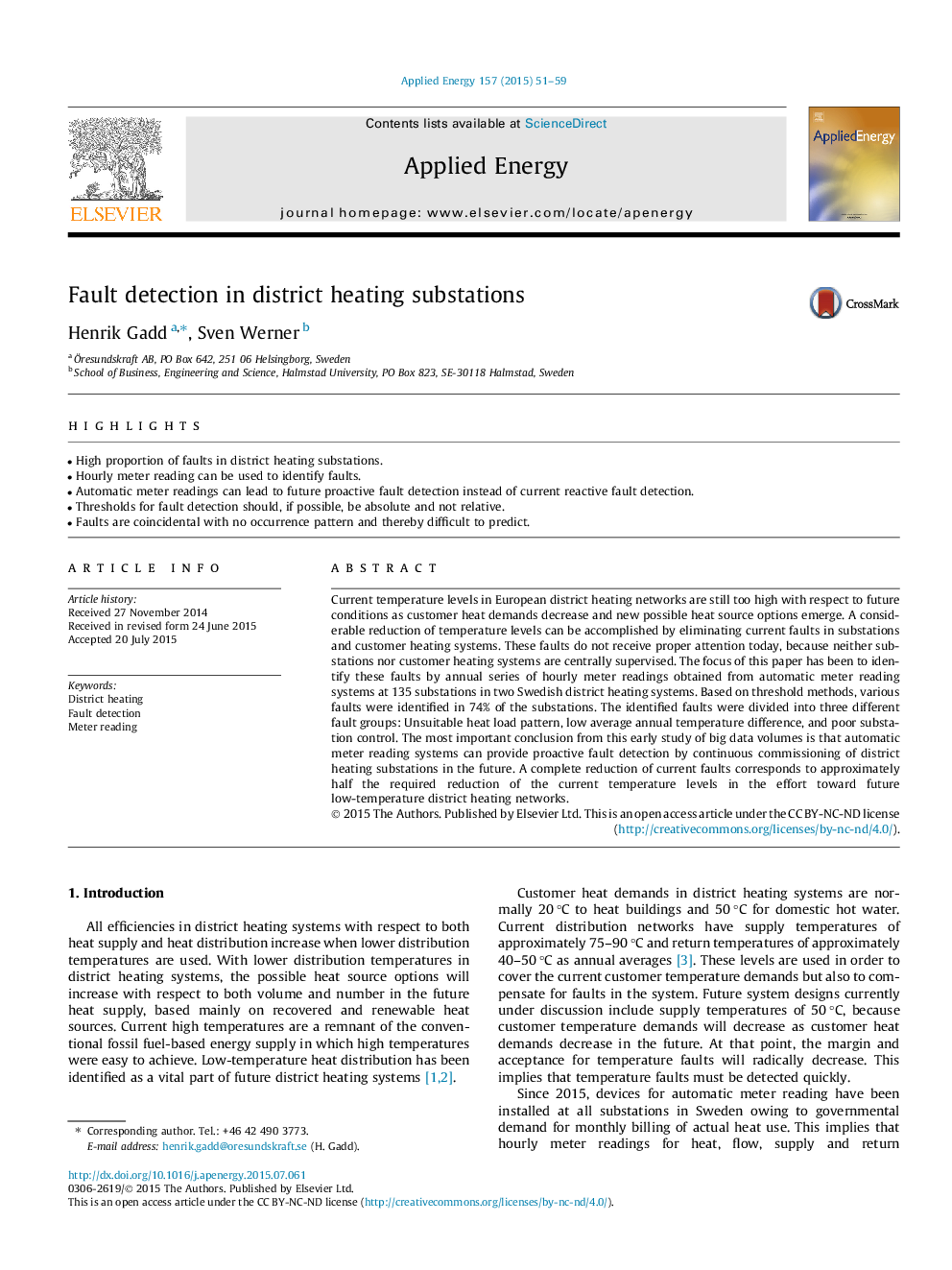| Article ID | Journal | Published Year | Pages | File Type |
|---|---|---|---|---|
| 6685851 | Applied Energy | 2015 | 9 Pages |
Abstract
Current temperature levels in European district heating networks are still too high with respect to future conditions as customer heat demands decrease and new possible heat source options emerge. A considerable reduction of temperature levels can be accomplished by eliminating current faults in substations and customer heating systems. These faults do not receive proper attention today, because neither substations nor customer heating systems are centrally supervised. The focus of this paper has been to identify these faults by annual series of hourly meter readings obtained from automatic meter reading systems at 135 substations in two Swedish district heating systems. Based on threshold methods, various faults were identified in 74% of the substations. The identified faults were divided into three different fault groups: Unsuitable heat load pattern, low average annual temperature difference, and poor substation control. The most important conclusion from this early study of big data volumes is that automatic meter reading systems can provide proactive fault detection by continuous commissioning of district heating substations in the future. A complete reduction of current faults corresponds to approximately half the required reduction of the current temperature levels in the effort toward future low-temperature district heating networks.
Keywords
Related Topics
Physical Sciences and Engineering
Energy
Energy Engineering and Power Technology
Authors
Henrik Gadd, Sven Werner,
